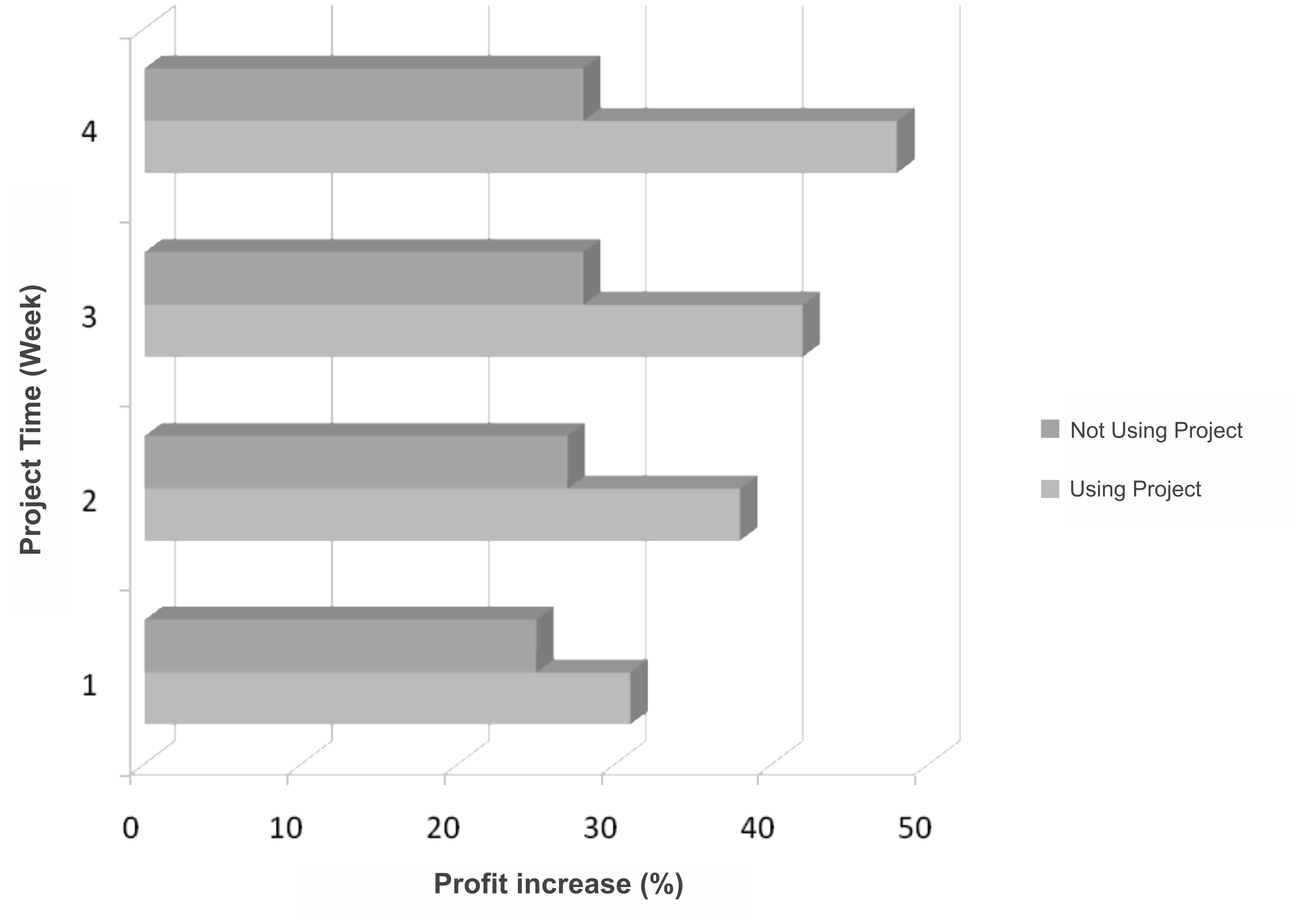-
Paper Information
- Paper Submission
-
Journal Information
- About This Journal
- Editorial Board
- Current Issue
- Archive
- Author Guidelines
- Contact Us
International Journal of Information Science
p-ISSN: 2163-1921 e-ISSN: 2163-193X
2013; 3(4): 81-88
doi:10.5923/j.ijis.20130304.01
Development Software for Resource Planning in Agricultural Nutrition - The Case of ‘Green Entrepreneurship’ (Greece)
I. Fountas1, K. Kalovrektis1, C. A Botsaris2, Ch. Ladias2, V. Pigadas1
1University of Piraeus, Informatics Department, Piraeus, Greece
2University of Central Greece Department of Regional Economic Development
Correspondence to: K. Kalovrektis, University of Piraeus, Informatics Department, Piraeus, Greece.
| Email: |  |
Copyright © 2012 Scientific & Academic Publishing. All Rights Reserved.
Entrepreneurship has been increasingly important for the global market, as it appears to offer an individually satisfactory and profitable working life, contributing to the national prosperity and economic growth at the same time. The paper presents the project “Green Entrepreneurship” which developed for Greece. The project includes e-mediation services through internet to producers, suppliers and consumers, within an intangible multi-cooperative association policy. The project aims to the development of a real e-distribution of agricultural products between suppliers (growers, producers, agricultural associations) and buyers (supermarkets, retailers), reliably and quickly within the new digital economy. Each producer and each supplier having created an account on the “Green Entrepreneurship” platform, can immediately have access and benefit from several options helping their product promotion. The platform is designed so as to be available, handy to both producers and suppliers and to facilitate the recording and management of their products. The research evaluation of the “Green Entrepreneurship” project follows the quantitative- experimental scale method model and includes two implementation phases: a) virtual operation of the “Green Entrepreneurship” and b) real operation for the “Green Entrepreneurship”. The research results show considerable economic benefits for both producers and suppliers, as well as for consumers.
Keywords: Green Entrepreneurship, ERP, GIS, International, E-market, Agriculture
Cite this paper: I. Fountas, K. Kalovrektis, C. A Botsaris, Ch. Ladias, V. Pigadas, Development Software for Resource Planning in Agricultural Nutrition - The Case of ‘Green Entrepreneurship’ (Greece), International Journal of Information Science, Vol. 3 No. 4, 2013, pp. 81-88. doi: 10.5923/j.ijis.20130304.01.
Article Outline
1. Introduction
- E-commerce has been already a prevalent, popular type of trade using electronic means for the goods and services delivery. E- commerce draws on technologies such as mobile commerce, electronic funds transfer, supply chainmanagement, Internet marketing, online transaction processing, electronic data interchange (EDI), inventory management systems, and automated data collection systems.The main advantage of e-commerce is the absence of the need for physical presence of individuals participating in a transaction. The influence of the Internet and of information transfer has induced fast development in the resource efficiency of lots of businesses using e-commerce methods[1].An e-market is a web site where groups of buyers and suppliers do business transactions using the Internet. Within such an e-market web site these groups are able to manage different products decreasing considerably their promotion cost. Enterprise resource planning (ERP) is business management software that allows an organization to use a system of integrated applications to manage the business. ERP software integrates all facets of an operation, including product planning, development, manufacturing processes, sales and marketing[2-4]. All the above definitions are included into the project “Green Entrepreneurship”.
2. Project ‘Green Entrepreneurship’
- Entrepreneurship is an important element which signs and drives the changes and trends in the sector between producers and consumers. The restructuring of the Greek (Europe) Agriculture keeps up with the economic and qualitative structure of the agricultural-nutrition sector. The project includes e-mediation services through internet to producers, suppliers and consumers, within an intangible multi-cooperative association policy. The project aims to the development of a real e-distribution of agricultural products between suppliers (growers, producers, agricultural associations) and buyers (supermarkets, retailers), reliably and quickly within the new digital economy.The philosophy[5-7] of the composing the project “Green Entrepreneurship” in the agriculture-nutrition sector is the below chain:Producer – Wholesaler/Retailer – ConsumerIn an increasingly changing competitive economic environment, marked by the appearance of new dietary needs and consumer preferences, the entry of low cost economies in the market, the consumer information, the promotion and the launch of products in the market, are considerable factors of the “Green Entrepreneurship” which operates in:§ agricultural economics ,§ development of new agricultural businesses, § potential investments in agriculture, § supply and demand convergence for agricultural products, § agricultural product management from the production to the distribution,§ consumer information.The market analysis in Greece indicates that today, there are not any organized forms of service delivery, which results to the expansion of negative effects throughout the supply chain. The development strategy of the project “Green Entrepreneurship” are:§ promotion of the agricultural products of the Greater Municipality- Prefecture- District in new markets,§ certified information for local producers,§ finding new trends in the agricultural chain,§ supply and demand optimization.The main target of the project “Green Entrepreneurship” is the development of mediation e-service delivery through Internet for producers, wholesalers/retailers and consumers of agricultural products within an intangiblemulti-cooperative association policy. The suggested project aims to the establishment of a real e-market for agricultural products responding to the needs of suppliers (growers, producers, cooperative associations) and buyers (super markets, local retailers) reliably and fast within a new digital economy[8-9]. The Participants of the projects of platform “Green Entrepreneurship” are shown in figures 1.The essential operations of the project “Green Entrepreneurship” is the below points:• opening new markets locally, • opening new markets globally, • reduction of the time for the finding and the distribution of goods produced within the Prefecture,• finding the most advantageous supply choice among numerous producers,• the least advertising cost • building up new rural businesses for local agricultural product processing,• local unemployment rate reduction.The main benefits for the buyers are:§ Very fast market research, § Price comparison possibility,§ Price reduction when buying via local producers,§ Product comparison possibility based on standard features,§ Finding the most advantageous choice for the local retailers.
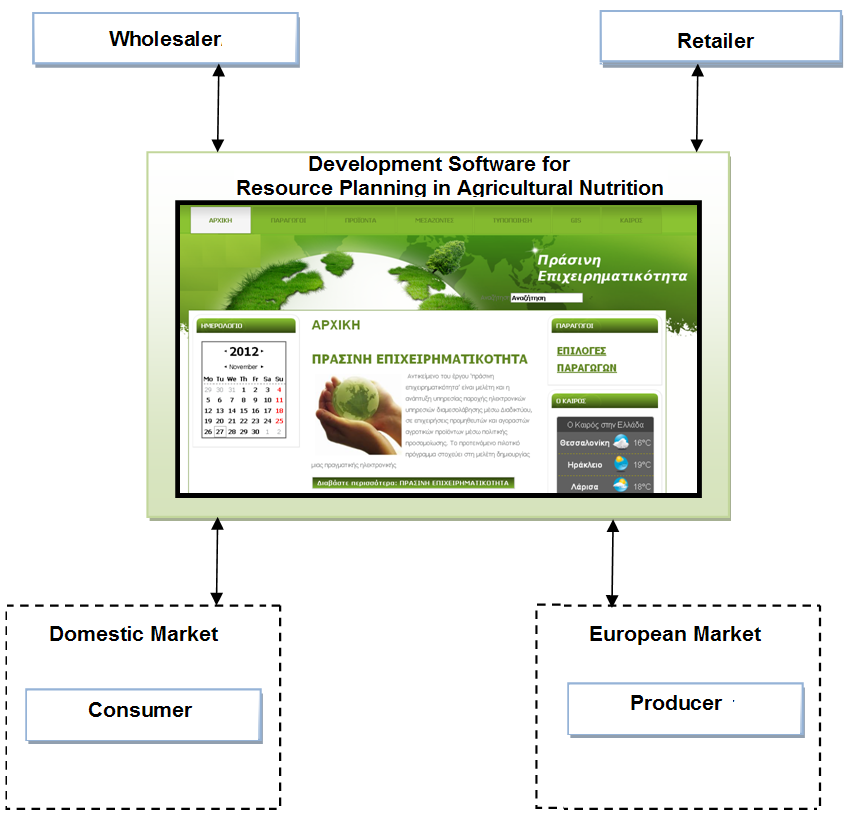 | Figure 1. Participants of the projects of platform “Green Entrepreneurship” |
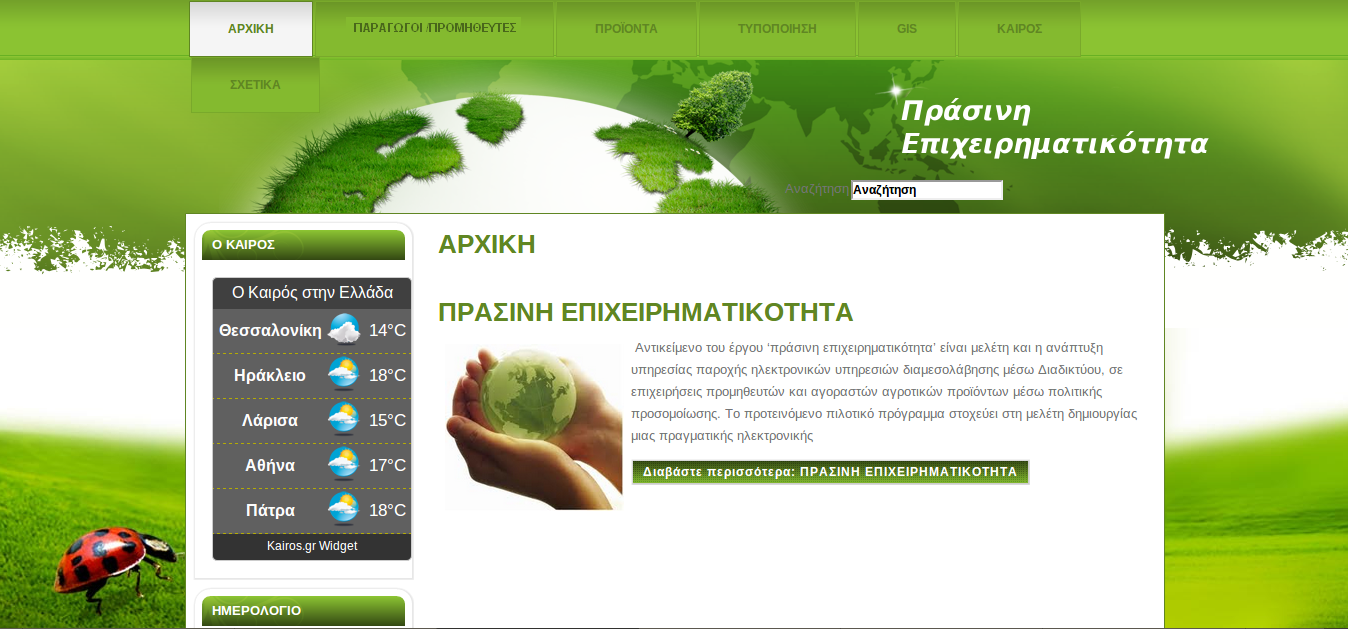 | Figure 2. Home screen of the platform “Green Entrepreneurship” |
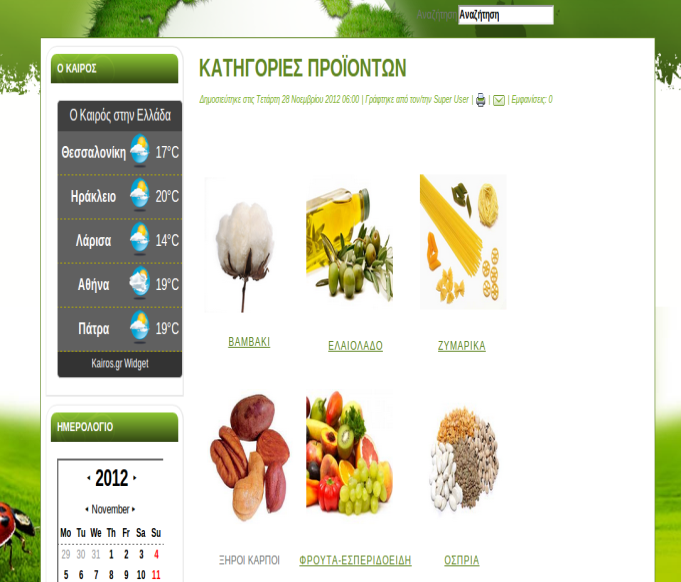 | Figure 3. Main screen of the platform “Green Entrepreneurship” |
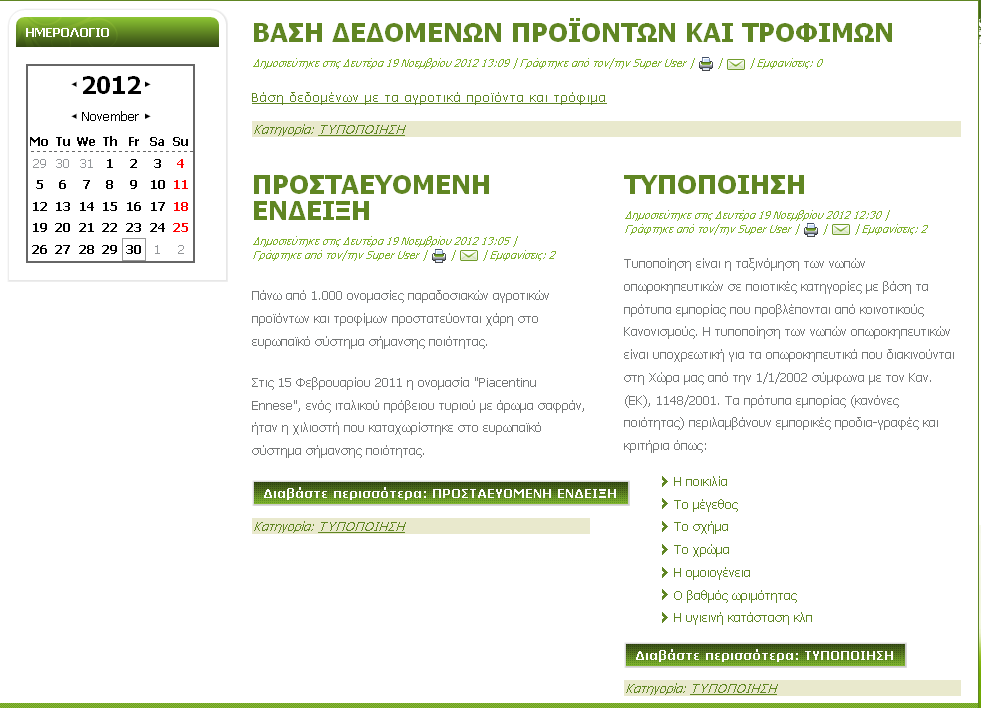 | Figure 4. Menu of the standardization of products |
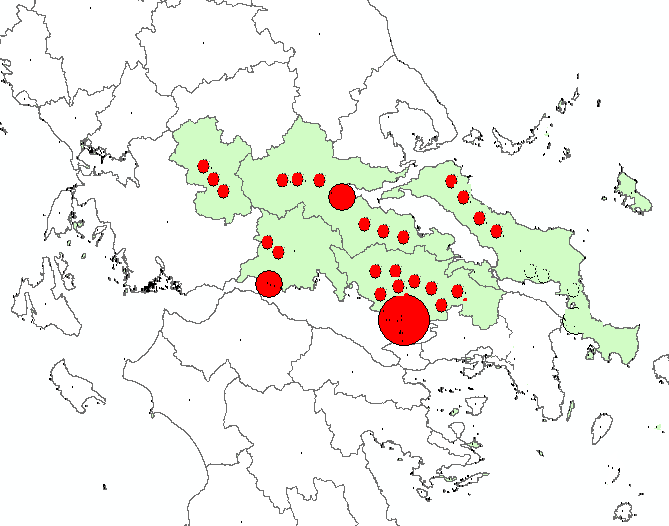 | Figure 5. Agricultural movement through GIS as a given choice according to the program recommendation for a Regional Prefecture |
3. Methodology of the Project “Green Entrepreneurship”
- For the realization of the project which aims to a viable, sustainable, significant and efficient, in terms of operation, formation of the local crops, through the “Green Entrepreneurship”, the following work packages (WP) were realized:WP1 Evaluating the Existing Situation: Recording data for the evaluation of the current situation of the crops. Were collected all necessary information according to the formation plans for the service delivery within the project.WP2 Software Development: Developed an electronic data base SGL (Structured Query Language). SGL was chosen because is a special-purpose programming language designed for managing data held in a relational database management system (RDBMS). Appropriate software was developed for the e-commerce via WEB. In fig. 2 to 4 are show screenshots of the developed software.WP3 Virtual operation: Virtual management of the project by student of University of Central Greece (producers, suppliers, citizens, consumers) within which the material resulting from this research methodology is evaluated. In this work package a pilot application of the project with virtual data and measures by local producers and suppliers was realized.WP5. Real operation: Real operation of the project by local producers, suppliers, citizens, consumers.WP6. Evaluation of project: Recording data and statistical results were evaluated. Data research processing helps to evaluating the project efficiency rating by all the agents involved.
4. Evaluation of the Project “Green Entrepreneurship”
- For the evaluation of the project “Green Entrepreneurship” the bellow steps are followed: The questions arising within the research and looked into during the project evaluation are:§ Which is the project efficiency rating for the producer? § Which is the project efficiency rating for the consumer?§ Which is the project efficiency rating for new markets opening (domestic and European)? The research for the “Green Entrepreneurship” project evaluation adopts the model of the quantitative experimental method. The research is as quantitative because the researcher does not involved personally in the process, keeps their distance, has an objective point of view, and uses measurement and data analysis tools with statistical methods. Defined as experimental because, its objective is to check out the operations and the benefits stemming from the project. Experimental researches are based on experiments, natural or artificial, through which the research checks the feasibility of a case. The experimental researches included two objective phases (Ph):Ph1. Virtual operation of the “Green Entrepreneurship”Ph2. Real operation of the “Green Entrepreneurship”During the first phase (Ph1) of the research in virtual operation of the “Green Entrepreneurship”, 72 students of University of Central Greece played the roles of Producers, Entrepreneurs and Consumers. They were the Experimental Team.During the second phase (Ph2) of the research on the “Green Entrepreneurship” carried out in the prefecture Voiotia of Greece (Europe), 72 active: Producers, Entrepreneurs (Suppliers) and Consumers (experimental team) were included to the project. The experimental method was chosen because the research compares the results from the users activities during the phases (Ph1) and (Ph2), within which the experimental team worked to the results of the answers given to multiple choice questions (Questionnaire) by a Control Team composed of the same roles as those of the experimental team Producers-Entrepreneurs-Suppliers, and Consumers.The Control Team uses traditional way and current forms of contracts for the promotion and sales of products (Fig.6).During the first phase (Ph1) the population target sample Producers-Entrepreneurs-Suppliers and Consumers, consists of a group of 72 students of University aged from 20 to 23 within the simulation process played the role of people aged from 25 to 60. The students were chosen by simple random sampling because it is a simple method ensuring that all trends of the demographic pyramid are equally represented at the sample and because of the selection code that is being used.
 | Figure 6. Experimental Team vs Control Team under the evaluation methodology |
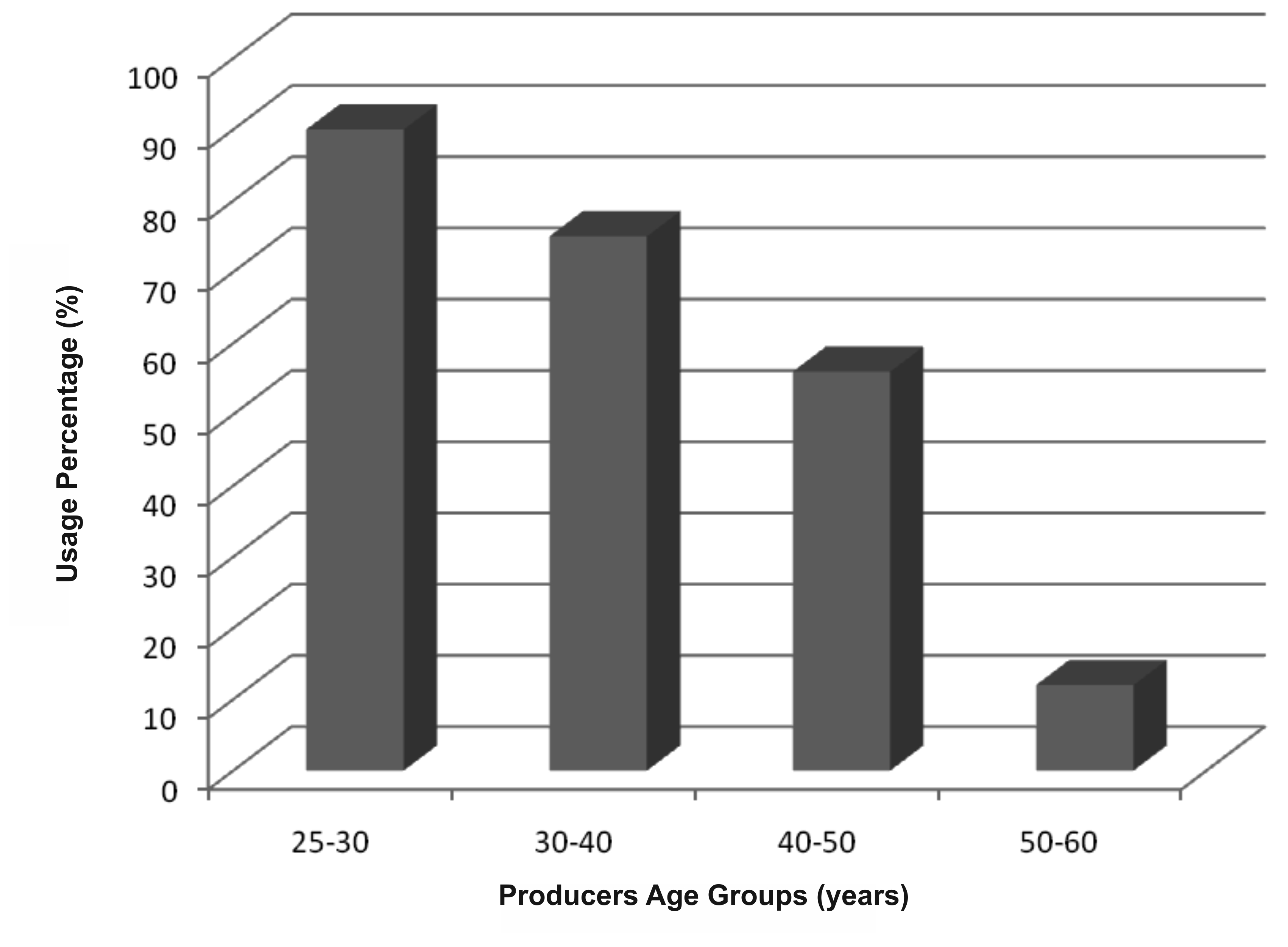 | Figure 7. Project use rate among different producer age groups |
5. Results - Discussion
- The following paragraphs present through a descriptive analysis the research results on the questions set during the phase (Ph1) (Virtual operation of the “Green Entrepreneurship” operation).
 | Figure 8. Project use rate among consumers |
 | Figure 10. Cost saving increase for the consumer through the “Green Entrepreneurship” within an example of an olive oil. (Using Project [experimental team], Not Using Project[control Team]) |
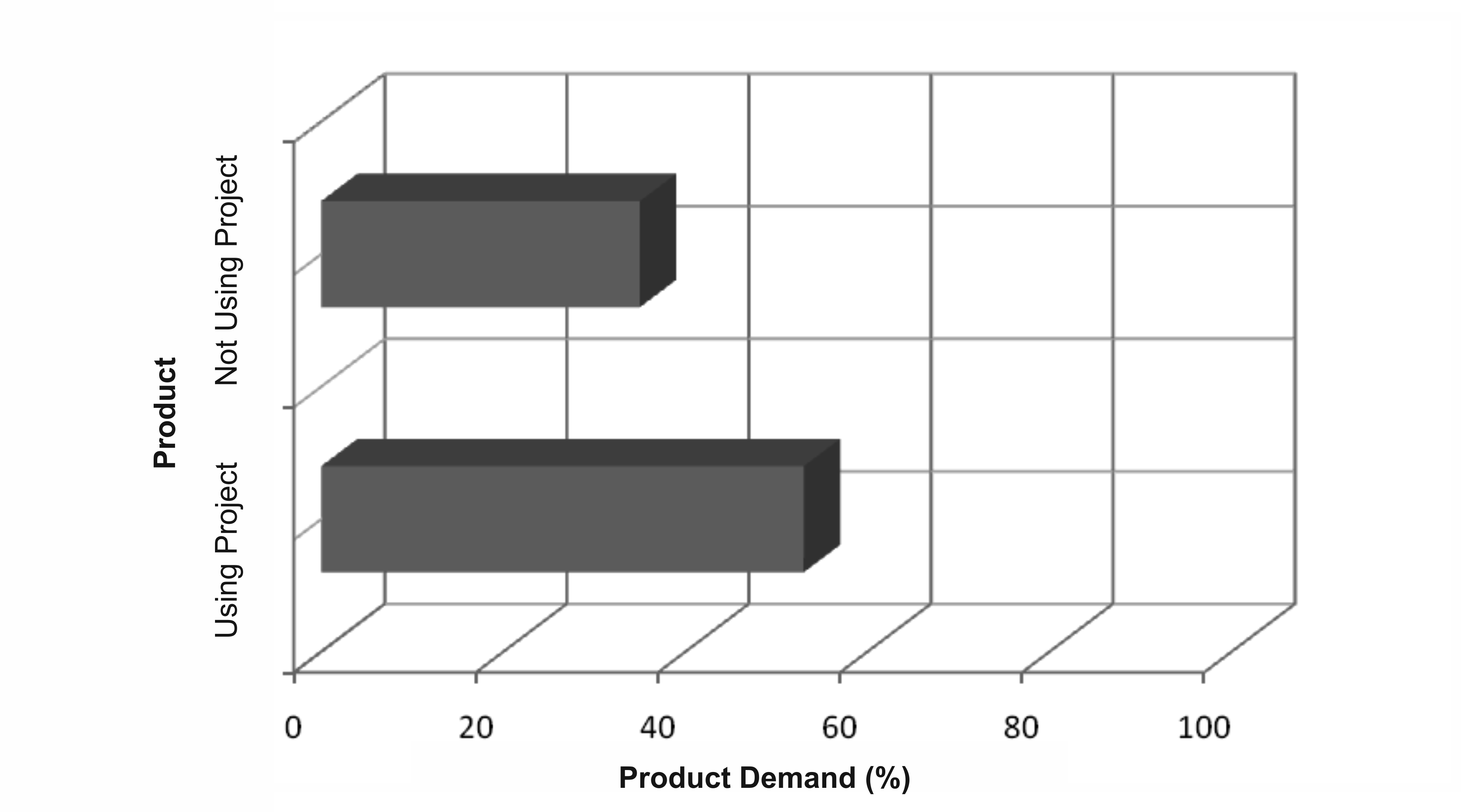 | Figure 11. Increase in product demand through suppliers by a large supply chain food (Using project[experimental team], Not using project[control Team]) |
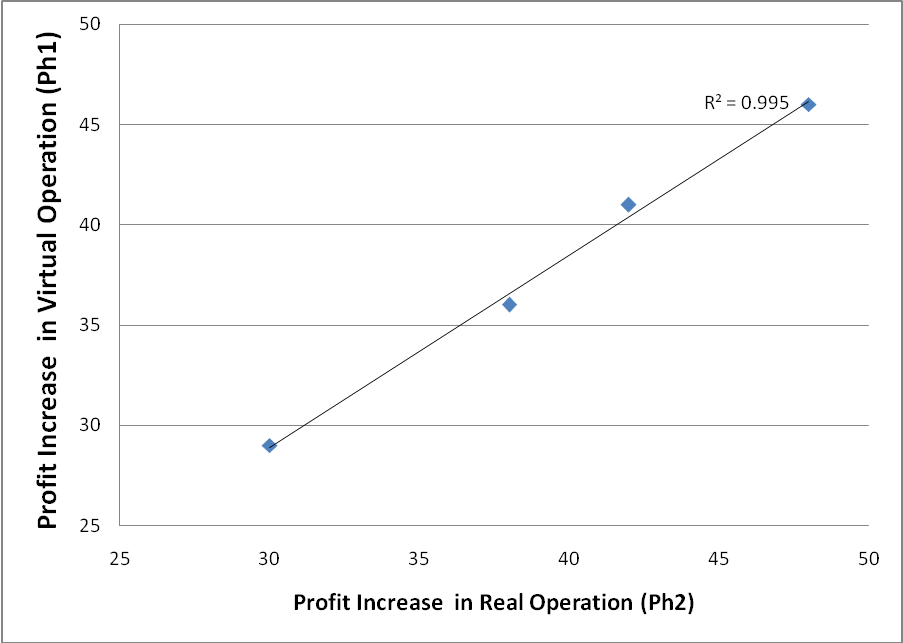 | Figure 12. Correlation of the results between virtual operation (Ph1) and real operation (Ph2) |
6. Conclusions
- The paper presented the developed project “Green Entrepreneurship”. The project includes e-mediationservices through internet to producers, suppliers and consumers, within an intangible multi-cooperative association policy.The gain for the producers, who distributed their products without the presence of an intermediate distributor, increased by 48%The product price decrease through its distribution by the producers to the consumers through the “GreenEntrepreneurship” without the intermediate distributor in the transaction meant a 59,5% cost saving for consumerEntry in new markets for entrepreneurs-suppliers through the “Green Entrepreneurship”, where large food supply chain units either in the domestic or in the global market can find them, presents an increase by 51,4%. The project “Green Entrepreneurship” provides benefits in the real world.
 Abstract
Abstract Reference
Reference Full-Text PDF
Full-Text PDF Full-text HTML
Full-text HTML